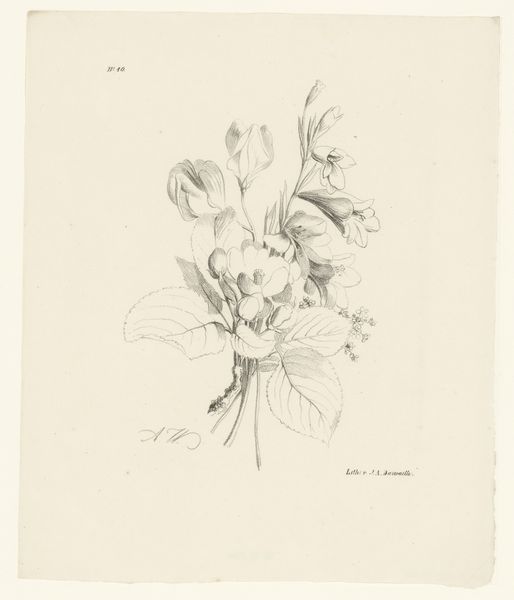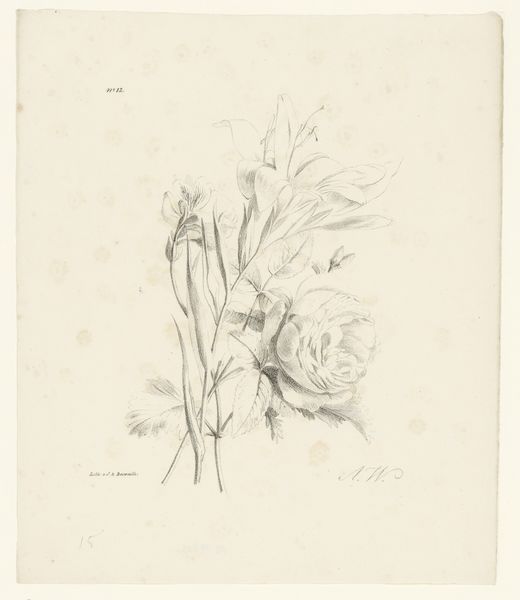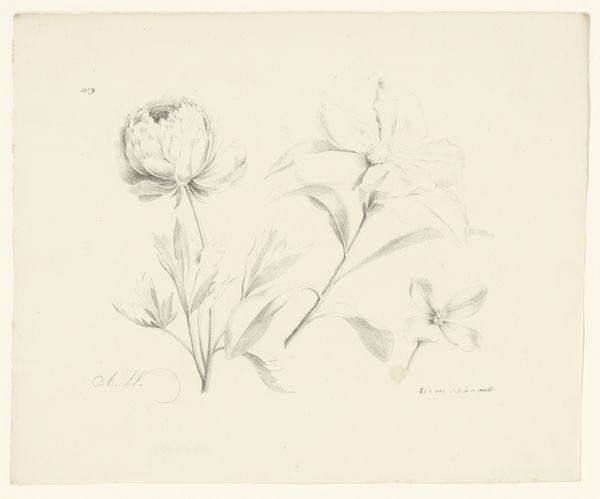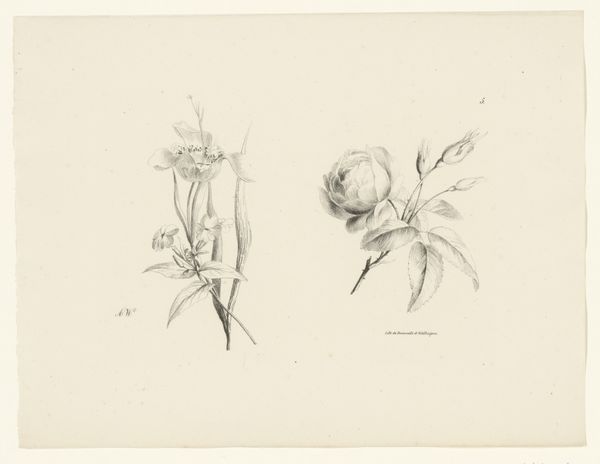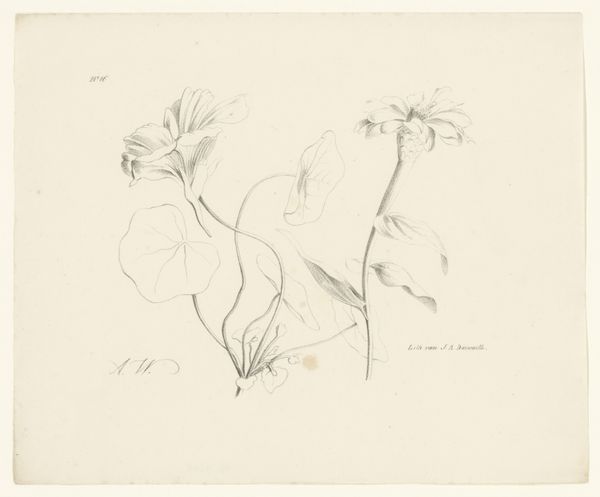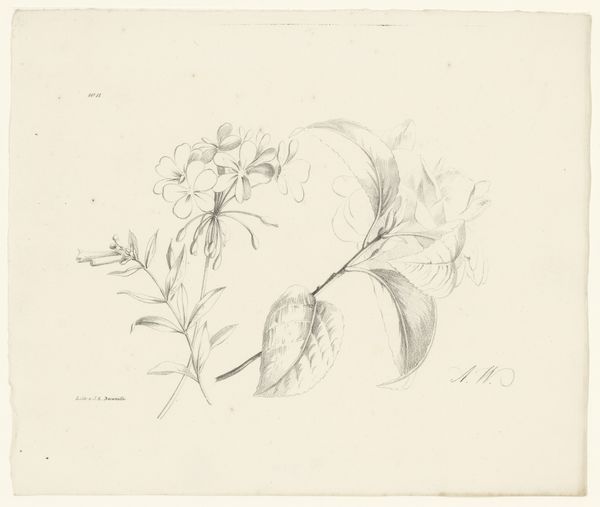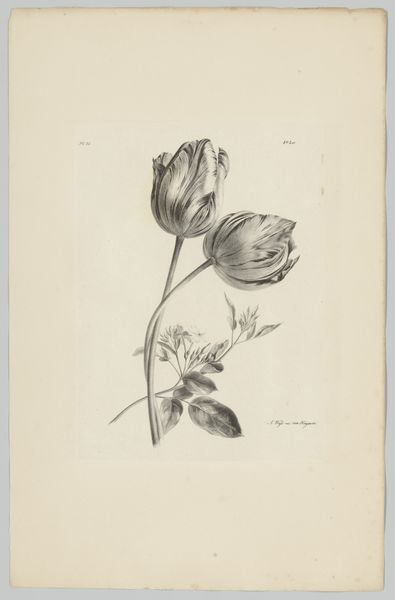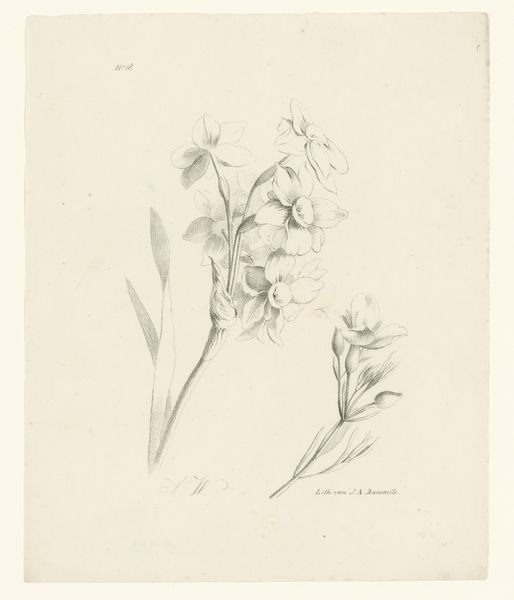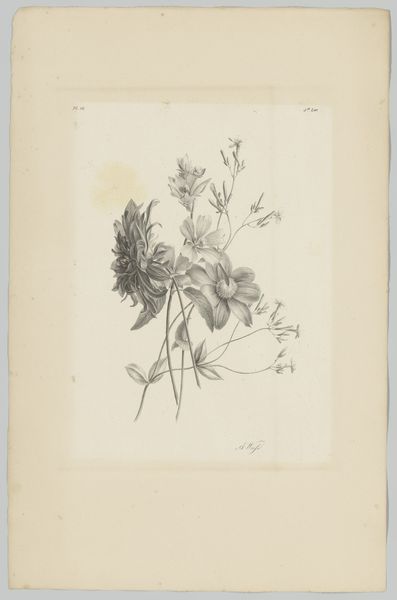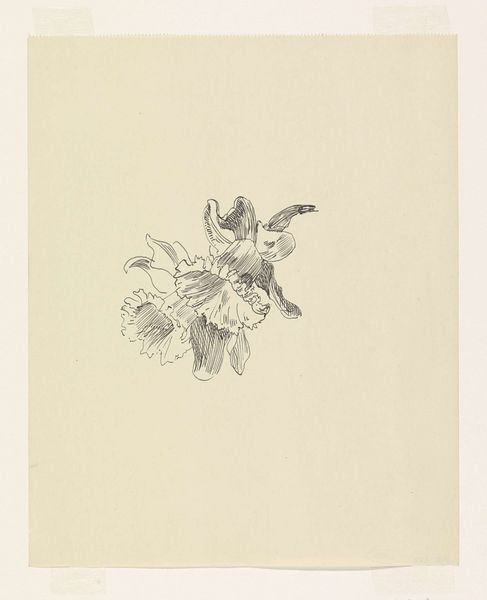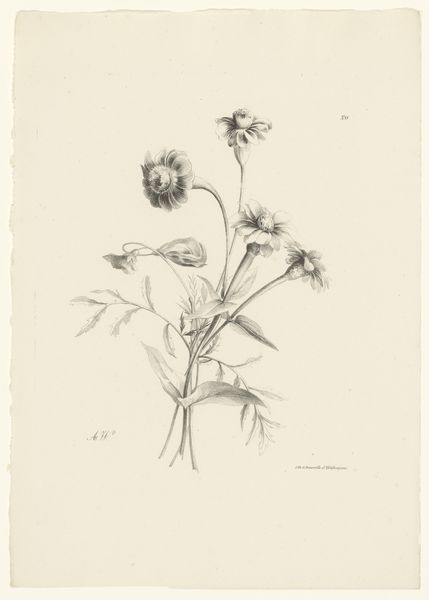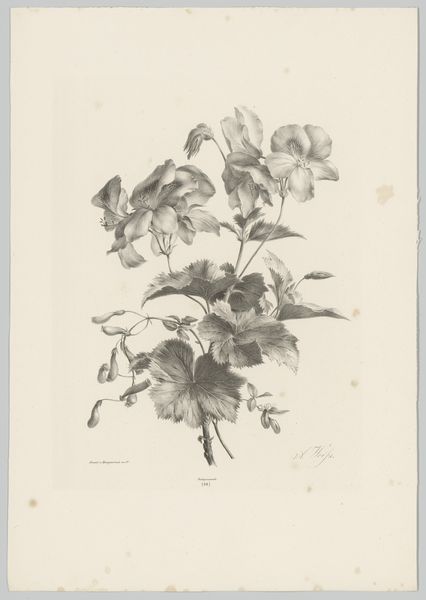
drawing, pencil
#
drawing
#
landscape
#
flower
#
pencil
#
realism
Dimensions: height 245 mm, width 201 mm
Copyright: Rijks Museum: Open Domain
Editor: This drawing, "Narcissen en andere bloemen," by Anton Weiss, was created sometime between 1820 and 1833. It's just pencil on paper, yet it captures this really delicate stillness. What strikes you when you look at this drawing? Curator: What interests me most is the cultural context. The early 19th century saw a surge in botanical illustration, often tied to colonial expansion and scientific cataloging. How might Weiss's drawing, seemingly a simple study, participate in or perhaps resist these power dynamics? Were these flowers drawn from life in a local garden, or sourced from exotic travels, thus representing something else? Editor: That's an interesting point, I hadn't considered the link to colonialism. It does seem rather… innocent, but your point definitely reframes it. Do you think the realism of the drawing is significant in this context? Curator: Absolutely. Realism in art during this period was often tied to claims of objective truth. But whose truth? And for what purpose? This level of detail, the delicate lines... Do they celebrate the beauty of nature, or appropriate it, turning something from nature into a mere scientific artifact? Editor: I see what you mean. By focusing on the detail, it sort of separates the flowers from their natural environment, doesn’t it? Curator: Exactly. Consider the absence of a landscape, which throws light on ideas around cultivation and control. It invites us to consider the power relations inherent in the act of observation itself. Editor: So it's less about the beauty of the flowers and more about questioning how we perceive and categorize the natural world. That gives me a lot to think about. Thanks! Curator: Indeed! Thinking critically about even the simplest botanical drawing reveals deeper issues related to science, power, and representation. Always question what’s presented.
Comments
No comments
Be the first to comment and join the conversation on the ultimate creative platform.
